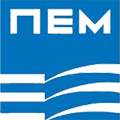
Hello everyone!
The past few days were translation-free! Yes, there are such days too in the life of a freelancer!
For some time now, I keep on mumbling that I really have to find some time to work on my marketing and branding strategies, do some invoicing and update my CV. So, with no huge projects on call and with all my clients relaxed and happy, I decided to put my CAT tools aside and become an accountant, a sales person, a consultant, a writer, a PR person and a marketing specialist! All specialisations in an amazing freelancer Holiday package (since Xmas is round the corner)!
From all the above, I decided to dedicate this post to the art of CV writing. After all, your CV can be your winning ticket to get yourself an interview or impress the recruiters you approach. Have you ever thought how difficult and complex the writing of your CV can be? You could spend hours and hours reading and searching for CV writing guides, tips and ideas on how to make your CV irresistible to any outsourcer. Well, I thought it would be a good idea to save you some time and trouble by presenting the following Quick Guide and give you an insight on how to make a great start and impress any potential recruiter at first glance! If you consider that recruiters usually spend less than 10-30 seconds reading a new CV, the first impression can really do the trick and send your CV to the top of the "yes" pile.
So, read on to find out which top tips can make your CV get the recruiters' attention in just a "snapshot":
Aesthetics/Layout
Make sure that your CV is clean, clear and easy on the eye. If you want to make the outsourcer keep on reading your CV for more than 30 seconds, you have to make sure that it is well structured and it contains relevant information in fonts that were designed with easy readability in mind. Here are some tips:
- Use a clear and easy to read font type (I am a fan of Verdana, Calibri and Arial – whatever works for you as long as it doesn't give the reader a headache!)
- Keep your paragraphs sort and to the point
- Use bullets (our brain loves lists!)
- Use bold and italic formatting (to point out headlines and any important information - but don't overdo it!)
- Use adequate white spacing between paragraphs (but don't fill your CV with empty space)
- If you are going to send your CV by post, do NOT fold it! Use an A4 envelope instead!
Error-Free
As first impressions really matter, spelling or grammatical errors can drive your CV straight to the bin. You have to remember that your CV represents yourself and poor spelling or grammar will definitely not make you more attractive as a candidate to the eyes of any recruiter.
What you can do:
- Use a spell-checker tool (make sure to set your spell-checker to the desired language: i.e. English U.K. or English U.S.A.)
- Make sure that you have spelled correctly names and addresses
- Double check for double spacing between words, incorrect punctuation and appropriate capitalisation
- Leave your final draft aside for a couple of days and then read it again with a clear mind
- Ask someone else to proofread your CV
CV Style
Most people don't realise that CV style is one of the most important choices they have to make when writing a successful Curriculum Vitae. However, there is no golden rule regarding style. The choice is yours and the ultimate goal is to create a CV that will get you invited for an interview.
There are three (3) most popular styles when writing a CV:
Chronological CV: This seems to be the most common CV style used. In this type of CV you outline your career history in reverse chronological order (beginning with the most recent facts). The same applies for educational information, certifications, specific skills and CPD. A chronological CV is detailed, comprehensive and easy to read.
This CV style works perfectly when there are no chronological gaps in your employment history and when you apply for a position within the same industry.
Functional CV: A functional CV puts the emphasis on your abilities and expertise, and highlights your skills rather than your work history. You still have to summarise your work experience and your education achievements, but you can add these sections at the bottom of the last page.
This CV type works splendidly if you have several career gaps, if you are changing industry or if you re-entering the job market. You should be extra careful, though, because if you don't have much work experience, it would be really difficult to highlight your achievements in a whole separate section.
Combined CV: A combined CV is a combination of both chronological and functional CV types. This type combines the best features of the chronological and the functional style. It emphasizes your best assets and achievements, as well as your work experience.
The combined CV style is perfect for those who have a strong career development and plenty of achievements. However, as you can understand this style is the lengthiest of all three CV writing styles.
Photograph
Is it common for people to include in a photo on their Curriculum Vitae? Well, this is a highly controversial issue and opinions are totally divided. In many European countries it is common to use a passport-size photograph (a smiling one of course) in the top right corner. However, including a headshot on your British CV will probably increase your chances of your CV being rejected. The use of photographs in CVs in the UK may contradict with the "Equality Act 2010" that legally protects people from discrimination in the workplace and protects a candidate from being rejected on grounds of sex, age, ethnicity and appearance. Unless you are applying for a type of job that requires a photograph, e.g. acting, modelling or promotions work, it would be best not to include a photo.
All in all, the decision of including in a photo in your CV is upon your own personal judgement. Here's my two cents: You can just simply follow local procedures depending on the country you are applying for a job, so as to be on the safe side.
Now that you know how to get started in writing a successful CV, you can create a new one or you can start practising on your existing one. I have a feeling that you will be amazed with the result!
If you need some examples, please visit these useful links:
CV Samples
http://www.cvtips.com/resumes-and-cvs/
Examples of International CVs – Working Abroad
http://www.kent.ac.uk/careers/sitesint.htm#cv
Avoid Grammatical Errors
http://careers.theguardian.com/cv-mistakes
Typefaces
http://creativebits.org/inspiration/periodic_table_typefaces
http://www.bbc.co.uk/news/magazine-10689931
http://rainylondonbranding.com/rainy-branding-blog/
CV Types
http://www.jobs.ac.uk/careers-advice/cv-templates/2073/classic-chronological-cv-example/
http://www2.open.ac.uk/students/careers/applying-for-jobs/types-of-cv










